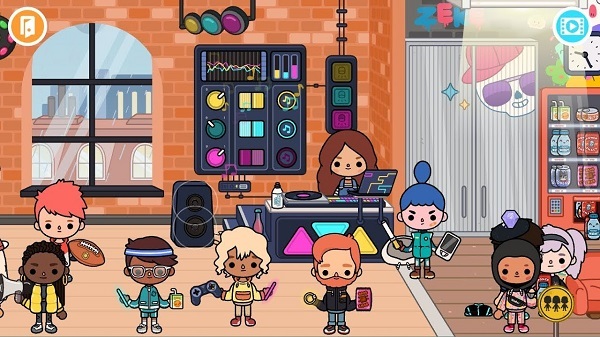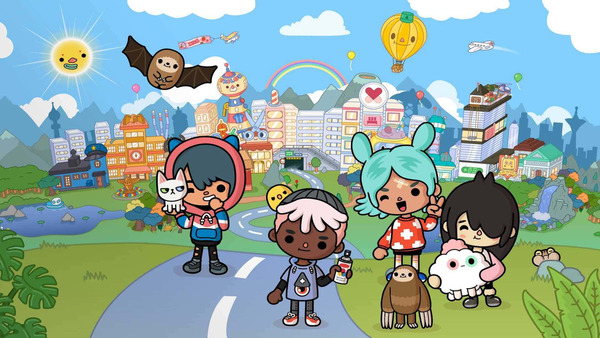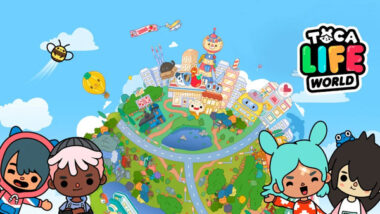Introduction
Toca Life’s open-world environment invites players to create their unique stories, interact with diverse characters, and explore a multitude of locations. However, one of the more complex aspects of gameplay lies in creating realistic character interactions and maintaining consistency across storylines. This article takes a deep dive into managing character interactions effectively in Toca Life, from building detailed character personalities to crafting cohesive story arcs and keeping the narrative engaging.
Developing Unique Character Personalities
A rich, engaging story begins with well-defined characters. Each character’s personality contributes to how they interact with others and their role within the narrative.

A rich, engaging story begins with well-defined characters
Setting Up Core Traits for Each Character
A solid character base starts with defining personality traits that make each character unique. This approach allows players to keep track of how each character reacts to situations and interacts with others.
Examples of Key Traits
Curiosity: Adds intrigue as a character is more likely to explore new locations or discover hidden objects.
Shyness: Creates depth, as this character might prefer small gatherings or avoid large crowds.
Adding Quirks and Interests
Give each character unique quirks or hobbies that set them apart. These small details make interactions more natural and allow players to predict how characters might react in different scenarios.
Establishing Relationships Between Characters
Character dynamics bring life to the world of Toca Life, helping players explore friendships, rivalries, and family ties.
Building Strong Friendships and Rivalries
Determine which characters have a close bond and which might clash due to differing traits. Friendships and rivalries add depth, providing an underlying motivation for each interaction.
Examples of Relationship Dynamics
Best Friends: Characters who share common interests or hobbies.
Rivals: Two characters who may be competing in a specific skill, such as cooking or sports.
Exploring Family Connections
Integrating family relationships adds emotional layers to the story. Family members can influence characters’ actions and decisions, leading to unique storylines based on familial loyalty, expectations, or traditions.
Planning Out Character Interactions
After establishing character personalities, interactions can be planned to drive the story forward.
Using Dialogue to Reflect Personality
Dialogue should be consistent with each character’s personality. For example, an outgoing character might initiate conversations, while a shy character might struggle to speak up.
Dialogue Examples for Personality Types
Bold Character: “Let’s do it! No need to wait!”
Reserved Character: “Um, maybe we should think about it first?”
Introducing Non-Verbal Communication
Non-verbal cues, such as body language or expressions, add realism to interactions. These details make characters feel alive and expressive, even without dialogue.
Creating Story Arcs Around Character Relationships
Story arcs are essential to explore and evolve character relationships, making them engaging over time.
Developing Short Story Arcs for Quick Engagement
Short story arcs focus on one specific event or issue, allowing for quick and satisfying resolutions.
Examples of Short Arcs
Lost and Found: A character loses something valuable, leading friends to help search and strengthen their bond.
Secret Mission: One character asks a friend to help with a mission, bringing excitement and secrecy.
Expanding to Long-Term Story Arcs
Long-term arcs require more planning but allow for detailed character development and complex storylines.
Setting Realistic Goals for Characters
Setting individual goals gives each character a purpose, driving their actions within the game and their interactions with others.
Choosing Goals Based on Personality
Goals should align with the character’s established personality, making the storyline authentic and relevant.
Examples of Goal-Oriented Storylines
Ambitious Character: A character wanting to open a café or launch a small business.
Curious Character: Seeking to explore every location and uncover hidden secrets.
Tracking Progress and Adjusting Goals
As characters achieve their goals or face setbacks, new objectives can be introduced to maintain momentum.
Choosing Locations to Enhance Storytelling
Each location in Toca Life provides a unique setting that can add context and depth to character interactions.
Matching Locations with Story Themes
The right setting makes each interaction feel more genuine. For instance, a lively café may be ideal for casual conversations, while a secluded beach could host more intimate or reflective scenes.
Location Examples for Different Interactions
Park for Friendly Gatherings: Perfect for relaxed, social events like picnics or group games.

Perfect for relaxed, social events like picnics or group games.
Hospital for Dramatic Turns: Adds tension, perhaps when a character has an accident or a loved one is ill.
Repurposing Spaces for Variety
Sometimes, familiar locations can be transformed to fit unique story needs. For example, a character’s home can become a secret meeting spot or a mini-detective agency.
Introducing Conflict and Resolution
Conflict brings intrigue to character interactions, and its resolution often strengthens relationships or leads to growth.
Planning Realistic Conflicts
Conflicts can stem from personality clashes, misunderstandings, or differences in goals. This adds complexity, as characters must work through these issues to progress.
Examples of Common Conflict Types
Jealousy: One character feels left out when a friend spends time with someone new.
Misunderstanding: A small miscommunication snowballs into a larger argument.
Creating Pathways to Resolution
Resolution can involve open dialogue, compromise, or even a heartfelt apology, helping characters move past conflicts.
Adding Surprises and Twists
Unexpected twists keep players and characters engaged, as they navigate new challenges or surprises.
Planning Small Surprises
A minor twist, like a character finding a hidden item or a surprise party, can shake up a storyline without drastically altering the character’s path.
Examples of Small Twists
Mystery Note: A character receives a mysterious note, prompting a mini-investigation.
Unexpected Visitor: A new character or old friend arrives, creating excitement and curiosity.
Building Up to Major Twists
Larger plot twists, like a family secret or sudden relocation, can serve as turning points for major story arcs.
Maintaining Consistency Across Storylines
Tracking each character’s journey and interactions helps avoid contradictions and keeps the storyline cohesive.
Using Character Timelines
A character timeline allows players to monitor significant events, relationships, and developments, ensuring continuity.
Timeline Components
Key Events: Note pivotal moments like relationship changes or major decisions.
Emotional Shifts: Track how each event affects the character’s mood and decisions.
Reviewing for Plot Gaps
Periodically revisiting past events helps identify any loose ends or inconsistencies.
Keeping Track of Props and Outfits
Props and costumes enrich interactions, helping characters express their personalities and adapt to story developments.
Using Thematic Props
Characters can use props that align with their personality or current storyline, such as instruments for a music-lover or a chef’s hat for an aspiring cook.
Examples of Prop Integration
Birthday Party: Props like balloons, gifts, and decorations can be used for special celebrations.
Cooking Scenes: Utensils, aprons, and dishes add depth to scenes in kitchens or cafes.
Changing Outfits to Reflect Character Growth
Outfits can reflect character progress, new roles, or emotions. Changing clothes for an event, job, or storyline adds variety.
Engaging with Other Players for Inspiration
The Toca Life community offers endless inspiration for fresh storylines and unique character interactions.
Sharing Story Ideas
Platforms like social media or Toca Life forums allow players to exchange ideas, helping everyone develop more creative and complex narratives.
Benefits of Sharing
Community Support: Get feedback and suggestions on stories or characters.
New Story Ideas: Find inspiration in other players’ story arcs and characters.

Find inspiration in other players’ story arcs and characters
Conclusion
Creating realistic and engaging character interactions in Toca Life requires thoughtful planning, creativity, and attention to detail. By focusing on character personalities, setting relevant goals, introducing conflicts, and adding surprises, players can build dynamic storylines that keep the narrative fresh and exciting. With the support of the Toca Life community, players can continue to push the boundaries of storytelling, making each character’s journey as memorable and impactful as possible.


